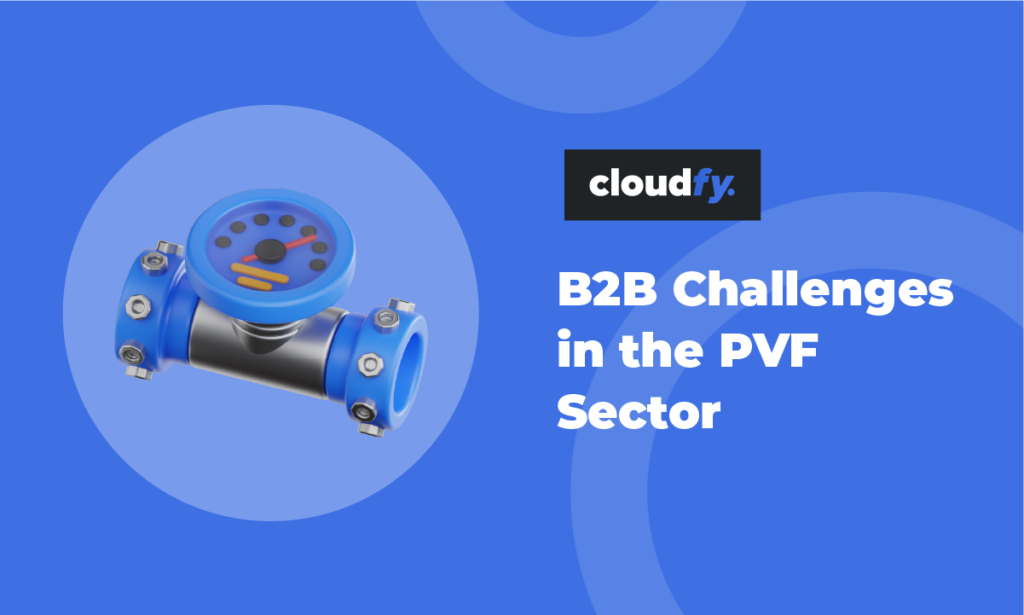Any online business to business transaction could be called B2B ecommerce and electronic data interchange or EDI has been part of supply chains since the 1960s thanks to the US army.
Since the early 1990s EDI has been a cornerstone of integration across supply chains that has led to the global expansion of online businesses.
Since 2020 there has been unprecedented growth in online buying. Now all B2B organizations must seriously consider ecommerce as part of their strategy for growth. However, even using ‘free’ ecommerce platforms will involve investment in expertise, planning, implementation, and maintenance, so how do you assess the real cost?
Ecommerce for B2B businesses
You will want to have confidence that your platform is robust and reliable. It must be capable of delivering all the B2B ecommerce functionality your buyers need such as bulk purchases, tiered pricing, personalized shopping, and streamlined payment workflows. Depending on your market, you might also need to accommodate complex rules and highly customized features, so you will want to know that your needs can be met, now and in the future.
Because the requirements of manufacturers, wholesalers and distributors vary so widely you will need to look at your investment versus the benefits for your business to find a sensible answer to the question of how much it will cost.
Understanding your requirements
Before choosing an ecommerce platform you will need to analyze your current and future requirements carefully.
Building or migrating – your costs will be very different if you are at the beginning of your ecommerce journey, compared to a project to modernize an existing platform or re-imagine your whole online approach. However, you will need to include your strategy for the future in the choices you make, to be sure your solution can grow with you.
Existing business systems – if your business already has an established enterprise resource planning (ERP) system then integration with your platform of choice will add value and streamline processes.
Identifying key features – the number and complexity of ecommerce features you need will also contribute to your costs. As a smaller company a self-service shopping experience which is mobile-friendly with good security, multiple payment options and an easy to use administration might meet all your requirements.
If your business is larger and more complex, you might look for more out-of-the-box functions such as built-in marketing tools, multiple currency options, gift cards, reward point systems, and integrated payment options such as PayPal and Opayo.
For complex operations you could be looking for advanced order fulfillment and integrated inventory management, sophisticated personalization, and bespoke search capabilities.
Customization – for specialist businesses with unique requirements ecommerce customization can create a seamless end-to-end self-service portal for customers. When you need to manage a large product catalog, international transactions, and complex buying rules with different levels of authorization, you will want to know that your platform can meet your sophisticated requirements.
For example, you could restrict sales of your products based on customer location or status, offer tailored purchase options including custom products, and dynamic account management and pricing tiers.

How to work out your cost/benefit
Depending on the types of features, integrations, and rules you need from your B2B ecommerce platform the costs can look very different. So, how do you justify the cost?
There’s no doubt that organizations of all types and sizes have seen their operations revolutionized through digital transformation. While it might be tempting to think that you can choose a basic solution to save money, this could be a costly mistake.
Building an ecommerce platform that meets your business needs exactly and which has in-built flexibility must be seen as an investment.
The pandemic has shown us that doing business online is viable for every sector so, as well as increasing your sales through online channels, you will need to consider the risk of falling behind digitally enabled competitors.
You must also have an in-depth understanding of your buyers’ needs to make sure you can deliver exceptional customer service, both online and offline.
To analyse the costs versus the benefits for your business, here are some considerations:
Streamlining sales – your sales team members are valuable experts with exceptional knowledge and experience of your product and market. You will want to make the best possible use of their skills and expertise. By taking advantage of self-service and automation opportunities available through ecommerce your team can remain focused on providing value-added services that will help you to complete higher value deals.
Reaching new markets – potential customers anywhere in the world can discover and purchase your products when you have an ecommerce presence. Pay-per-click advertising is a powerful tool, but around half of your online traffic is organic. A well-designed and technically effective ecommerce site and a focus on search engine optimization (SEO) will bring new customers directly to your site.
Personalization – buyers expect to receive a service tailored to their needs. Their expectations are high. Your ecommerce platform will allow you to meet their needs with bespoke personalization and pricing and access to their previous purchases for easy reordering. You can also tailor payments according to their previously negotiated pricing agreements and bundles. This provides a high quality customer experience and reduces the risk of errors due to manual data re-entry.
Choose a solution designed for B2B
When you have defined your business requirements you will certainly want to review the market to assess various platforms for cost, functionality, and flexibility for the future.
Many platforms offer both retail (business to consumer or B2C) and B2B functionality but Cloudfy has been designed from the beginning to meet the needs of manufacturers, wholesalers, and distributors. This means that all sizes and types of B2B companies can benefit from an exceptional range of functionality straight out of the box. This helps to reduce the need for costly customizations but where you need something special there’s also a powerful applications programming interface (API) to meet your needs.
Cloudfy is a software as a service (SaaS) solution which can flex and grow with your business. This makes it cost effective because you won’t have to pay for resources or infrastructure that you don’t yet need. When you’re ready to expand you will know your ecommerce platform can keep pace.
Overall, this makes the total cost of ownership of a Cloudfy solution very attractive.






